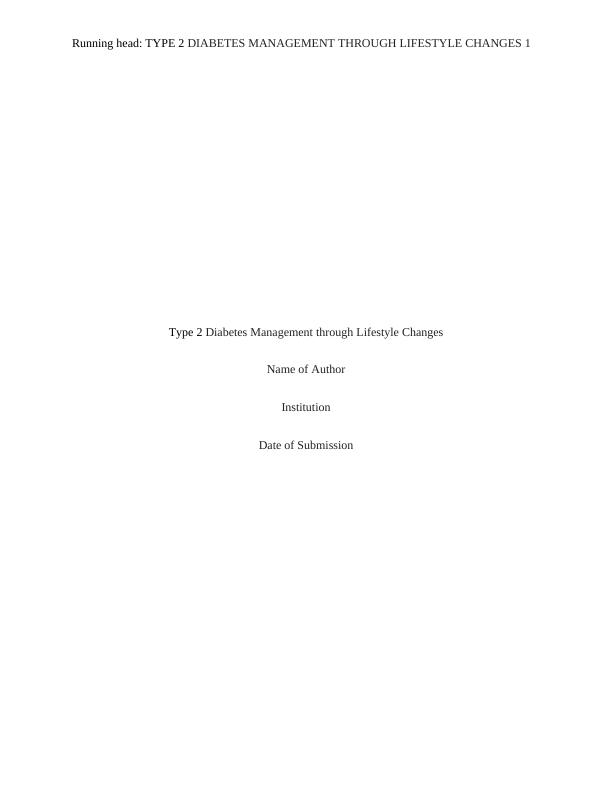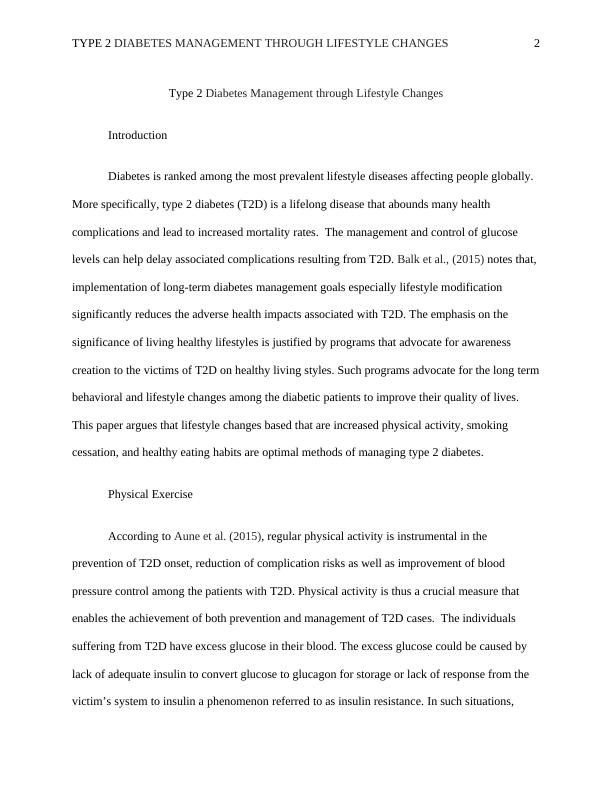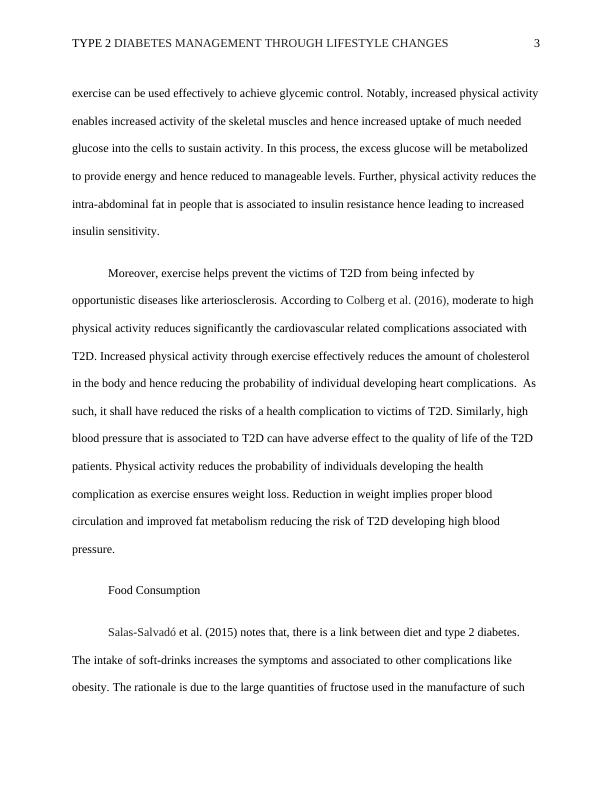Type 2 Diabetes Management through Lifestyle Changes
This essay discusses the evidence supporting lifestyle modification as the optimal approach to manage type 2 diabetes, focusing on diet, physical activity, and harmful habits.
8 Pages1842 Words174 Views
Added on 2022-11-26
About This Document
This article discusses the importance of lifestyle changes in managing type 2 diabetes, including increased physical activity, smoking cessation, and healthy eating habits. It explores the benefits of these changes in controlling blood glucose levels and reducing the risk of complications associated with type 2 diabetes.
Type 2 Diabetes Management through Lifestyle Changes
This essay discusses the evidence supporting lifestyle modification as the optimal approach to manage type 2 diabetes, focusing on diet, physical activity, and harmful habits.
Added on 2022-11-26
ShareRelated Documents
End of preview
Want to access all the pages? Upload your documents or become a member.
Diabetes: Anatomy, Physiology, Causes, Symptoms and Management
|9
|1720
|317
Diabetes Mellitus (Type II): Pathophysiology, Symptoms, Treatment and Relevance to Nursing Practice
|22
|2061
|395
Culturally Targeted Interventions for South Asian Populations: to delay the onset or for improved management of Type 2 Diabetes
|78
|24322
|108
Nursing care plan for diabetes PDF
|13
|3156
|74
Type 2 Diabetes Assignment
|12
|2696
|149
Resistance training to improve type 2 diabetes: working toward a prescription for the future
|10
|10604
|86



